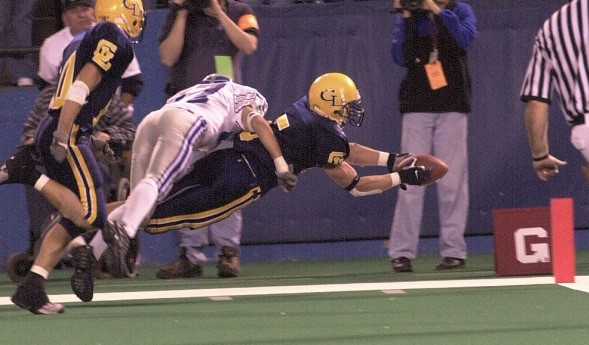
Best Practices
June 28, 2016
Two-thirds of concussions reported in Michigan high school football last fall occurred in games. Even though there are at least five times more hours of exposure during practices than games, there are half as many concussions during practice, according to the mandated concussion reporting requirement of the Michigan High School Athletic Association that is unmatched in the country in terms of its depth and breadth for a statewide requirement.
Michigan was among the handful of states to restrict contact in practice, in 2014, a full season prior to recommendations from the National Federation of State High School Associations and later action by most other statewide associations.
Some of those statewide organizations continue to operate without limitation on contact in football practices, while their counterpart organizations in other states have gone so far as to limit contact to a certain number of minutes in a day and/or week.
Entering mostly uncharted waters for high school football in early 2014, an MHSAA task force recommended that the number of practices be limited where collisions between players could occur – no more than one per day during preseason, no more than two per week after the first game.
This change was embraced by this state’s football coaches association and adopted by the MHSAA Representative Council. All parties liked the ease of administration of this policy, and all distrusted the idea of limiting the number of minutes of contact during practices.
If there is a 30-minute limit on contact in a day or a 90-minute limit on contact in a week, is it the same 30-minute or 90-minute period for all players, even if many are not involved in one or more of the contact drills? Or does the limit apply to each player individually; and if so, how is that tracked, and by whom?
These and other questions made coaches and administrators question how effective a limit on minutes might really be. Nevertheless, a 90-minute per week limit during regular season has been made an MHSAA recommendation for the 2016 season. This will provide an opportunity to address and possibly answer some of the questions that have been raised.
The MHSAA will survey schools this fall about their practice plans and the actual time spent in contact drills by players, assessing how that differs according to offense, defense, player position and grade in school, and determining best practices for how to track player contact minutes.
When Michigan acted in 2014 to limit contact in practice, it was one of the first states to do so. As Michigan takes additional steps to limit contact in practice, it will be one of the first states to do so after researching the best ways to actually do it.

Moment: Comets Make Last Minute Count
October 8, 2020
By John Johnson
MHSAA Director of Broadcast Properties
A hop and a wave.
That’s what it took for Grand Ledge to pull off the most unlikely of comebacks in the 2000 Division 1 MHSAA Football title game at the Pontiac Silverdome, doing what no team has ever done – scoring two touchdowns during the final minute to claim a 19-14 victory over Utica Eisenhower.
The game was your typical large-school, heavyweight fight, tied at 7-7 with less than five minutes to play when Eisenhower’s Chris Hoover broke loose for a 36-yard scoring run. But Grand Ledge bounced right back, mounting an 80-yard drive following the ensuing kickoff, capped by quarterback Matt Bohnet’s five-yard scramble to the end zone.
With just 53 seconds left on the clock, Comets coach Pat O’Keefe, already known as one of the state’s most successful baseball coaches, decided he had to gamble. Go for two.
“We were tired,” O’Keefe told the Lansing State Journal after the game. “I thought the momentum was there for us and I didn’t want to play overtime.
“We thought about it a little bit, and I saw it in the kid’s faces. I asked Matt (Bohnet) what he wanted to do and he said, ‘Let’s go for the win.’”
But the conversion play broke down. Bohnet couldn’t find an open receiver and was tackled short of the goal line.
Everyone in the Silverdome knew what was coming next. No one could have seen, however, what was going to happen.
The onside kick by Nick Sandy took a textbook hop, and Colin O’Keefe flew through the air to grab it and give the Comets new life.
Two plays later, Bohnet was scrambling again – and a wide-open Tim George was downfield waving at him. Bohnet connected with George at the 15-yard line, and after shaking off one would-be tackler, George headed for the end zone, finishing with a pylon dive that gave the Comets the lead. It was the second TD catch of the game for George.
“I caught the ball and got bumped,” George told The Detroit News. “I saw the goal line and I knew I had to get there. I didn’t even think about going out of bounds.”
You can watch the final moments of the FOX Sports Detroit coverage of the 2000 Grand Ledge-Utica Eisenhower game below.
PHOTO: Grand Ledge's Tim George dives for the winning touchdown during the final seconds of the 2000 Division 1 Final at the Pontiac Silverdome. (Photo by Gary Shook.)

